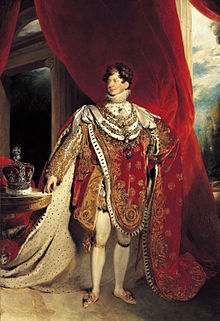Royal Medal
| Royal Medals | |
|---|---|

George IV of the United Kingdom (pictured) founded the Royal Medals in 1825
|
|
| Awarded for | For outstanding achievements in biological, physical and applied sciences. |
| Sponsored by | Royal Society |
| Official website | royalsociety |
The Royal Medal, also known as The Queen's Medal, is a silver-gilt medal awarded each year by the Royal Society, two for "the most important contributions to the advancement of natural knowledge" and one for "distinguished contributions in the applied sciences" made within the Commonwealth of Nations. The award was created by George IV and first awarded in 1826. Initially there were two medals awarded, both for the most important discovery within the last year, a time period which was lengthened to five years and then shortened to three. The format was supported by William IV and Victoria, who had the conditions changed in 1837 so that mathematics was a subject for which a Royal Medal could be awarded, albeit only every third year. The conditions were changed again in 1850 so that:
... the Royal Medals in each year should be awarded for the two most important contributions to the advancement of Natural Knowledge, published originally in Her Majesty's dominions within a period of not more than ten years and not less than one year of the date of the award, subject, of course, to Her Majesty's approval. ... in the award of the Royal Medals, one should be given in each of the two great divisions of Natural Knowledge.
In 1965, the system was changed to its current format, in which three Medals are awarded annually by the Monarch on the recommendation of the Royal Society Council. Because of its dual nature (covering both physical and biological science) the award winners are chosen by both the A- and B-side Award Committees. Since its establishment in 1826 the medal has been awarded 405 times.
...
Wikipedia
